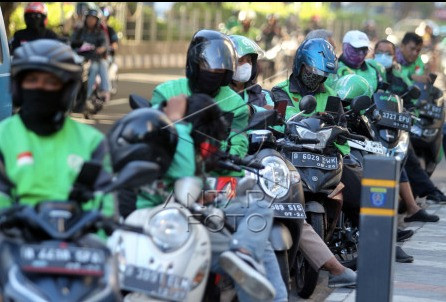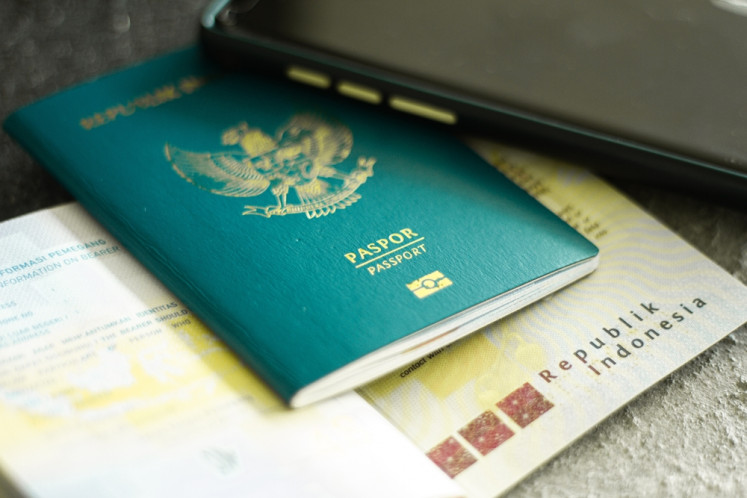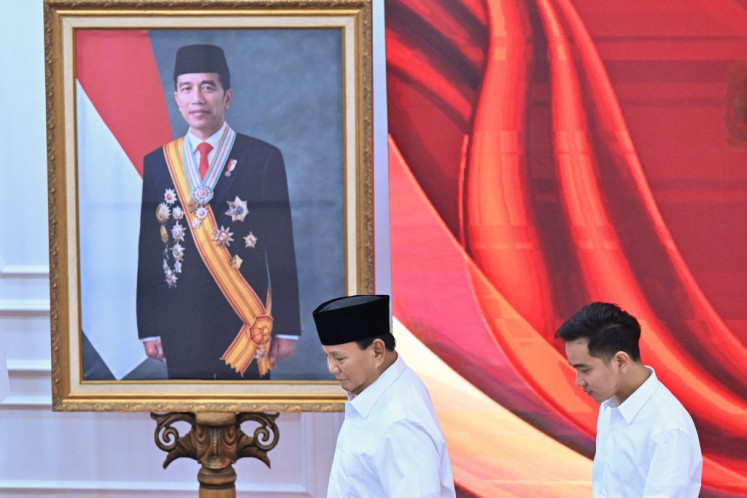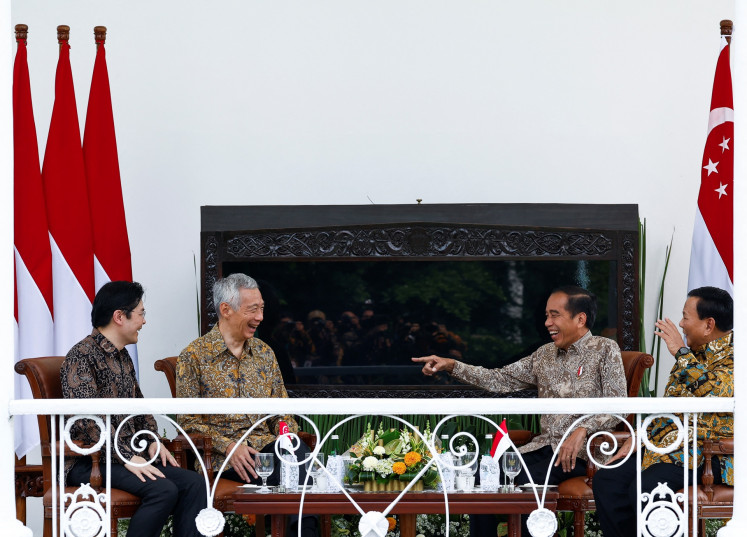We all need to eat without consuming the world in the process
More than 80 percent of the world’s smallholders and family farmers live off the land in this region and their interests and livelihoods must be safeguarded.
Change Size
 Back-breaking, unrewarded: Farmers in Pati, Central Java, prepare rice seedlings in a nursery plot for transplantation. Indonesia failed to meet its 2016 rice self-sufficiency target. (Antara/Yusuf Nugroho)
Back-breaking, unrewarded: Farmers in Pati, Central Java, prepare rice seedlings in a nursery plot for transplantation. Indonesia failed to meet its 2016 rice self-sufficiency target. (Antara/Yusuf Nugroho)
I
ndeed, we live in a world full of competing interests and disagreements. Yet despite this, there is one underlying, unifying interest that we all share. It is in all our interests to have access to safe, affordable and nutritious food at all times. The question is will there be enough food for all in the near future, and will it be produced sustainably?
The answer is not so affirmative without immediate action. Despite our common interest, this region is backsliding into greater hunger and malnutrition. According to one recent UN report, Asia and the Pacific is so off track, it would need an additional 35 years to achieve the Sustainable Development Goals – in 2065.
Some of the backslidings is obvious. This year, in Asia and the Pacific, we’ve witnessed droughts and floods, the highest food prices in decades, an armed conflict in Eastern Europe, and a lingering COVID-19 pandemic that continues to threaten health, disrupts supply chains and livelihoods. Together, these have resulted in a crisis of five “Fs” – lack of food, feed, fuel, fertilizer and finance, and it’s predicted there could be reductions of cereal output next year due to fertilizer shortages in some countries in the region.
But even before these crises, successive annual reports of the Food and Agriculture Organization’s (FAO) flagship publication, the State of Food Security and Nutrition, were warning the fight against hunger and malnutrition was stalling, and then failing. In 2021, more than 400 million people in Asia-Pacific were malnourished, most of them in South Asia. In fact, of the billions of people in this region, 40 percent cannot afford a healthy diet.
For decades, as the world’s population grew, we took our collective eye off the agrifood food systems ball. The world was producing enough food, and there was little political appetite to upset the applecart. Our agrifood systems were (and still are) a complex, interdependent system, of planting, harvesting, transporting, processing, marketing and consuming.
The wakeup call came two years ago with the arrival of a global pandemic. While food production didn’t come to a halt, the lockdowns and supply chain disruptions that followed took a serious toll on this interdependent system. For those of us in Asia and the Pacific, the pandemic and fallout were happening in tandem with other huge disrupters such as climate change, natural disasters, hazards and risks that account for 60 percent of global fatalities and 40 percent of economic losses.
And so it became clear we urgently needed to fix our agrifood systems by transforming them to withstand shocks and disruptions, and also use this an opportunity to make nutritious foods and healthy diets more accessible and affordable for all.
Last year, the UN Food Systems Summit in New York was the world’s first major attempt to move these plans forward. Now it’s time to get that transformation underway on the ground in our Asia-Pacific region. In other words, it’s time to roll up our sleeves and build a better apple cart. But it will take more than just a few of us to do that.
Governments in our region must act through leadership. Asia-Pacific’s private sector, among leaders in technology and innovation, must broaden its customer base to provide affordable solutions to the region’s smallholders. Civil society, while continuing its important role as watchdog, must work more proactively with policymakers and the private sector. Academia must accelerate its research, while resource partners must make this transformation their top priority, because to achieve this massive transformation, our region, indeed the world, must literally, put its money where its mouth is.
More than 80 percent of the world’s smallholders and family farmers live off the land in this region and their interests and livelihoods must be safeguarded. Social safety nets and reskilling programs to improve employment prospects should form an important part of this transformation.
The good news is that, overall, there are plenty, and a variety, of available solutions – policy and evidence-based, regenerative, innovative and technological. These include strengthening actions to sustainably manage natural resources, enhance forest areas and restore landscapes. The Asia-Pacific region benefits from thousands of years of agriculture-based systems and hundreds of generations of traditional knowledge which could be coupled with a fast-growing entrepreneurial ecosystem.
For our part, FAO’s mission is to support the 2030 Agenda through helping member nations and partners build more efficient, inclusive, resilient, and sustainable agrifood systems for better production, better nutrition, a better environment, and a better life, leaving no one behind.
In order to get this massive region’s transformation underway, FAO is convening an Asia-Pacific Symposium on Agrifood Systems Transformation in Bangkok, on Oct. 5 – 7 (in-person and virtual). The response has been impressive, with government ministers from many member nations signing up, along with private sector, academia and civil society joining in as well.
Without doubt, this transformation will require massive public and private investment – and the political will to effect the change. But if we fail to act, even the year 2065 may be too optimistic.
This time, all eyes are on the ball, as no one doubts what’s at stake. Failing to transform our agrifood systems is not an option – it is imperative for our future and that of our children.
***
The writer is assistant director-general and regional representative for Asia and the Pacific of the Food and Agriculture Organization.










